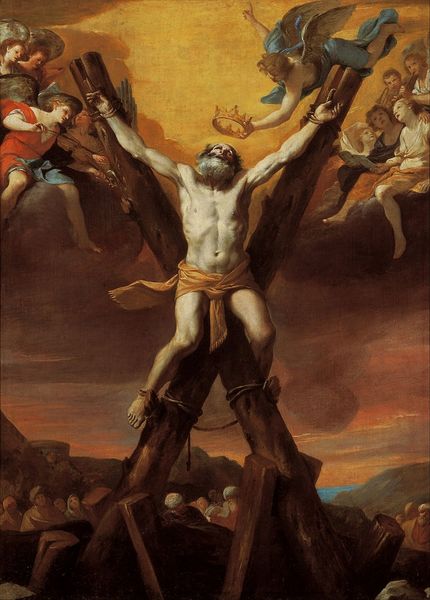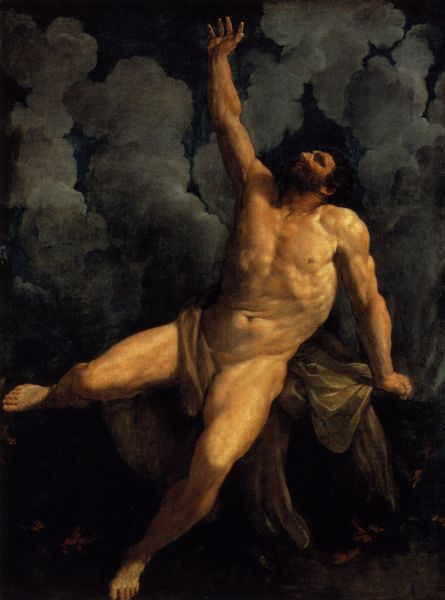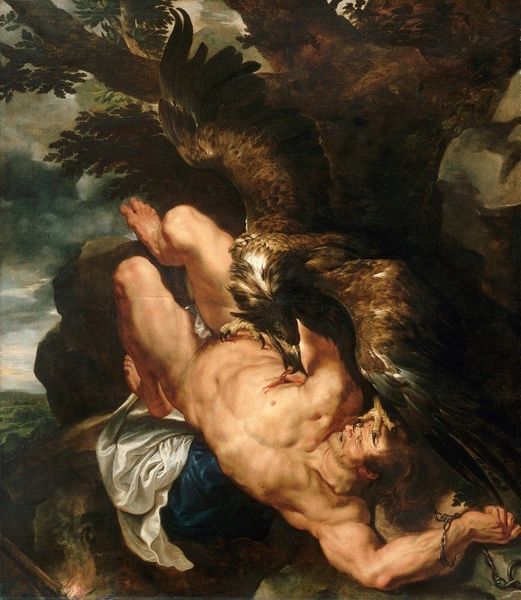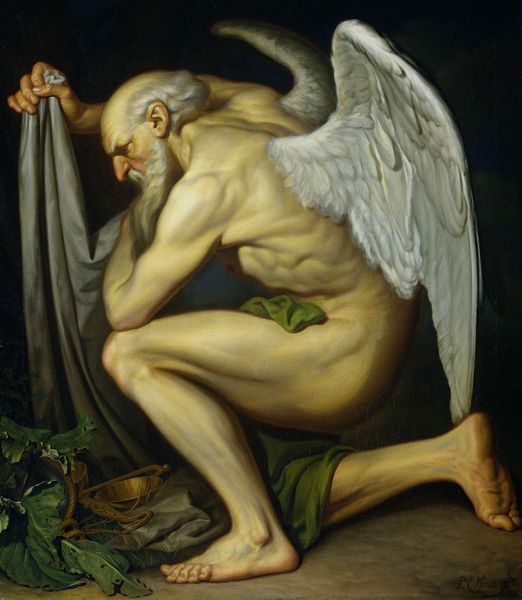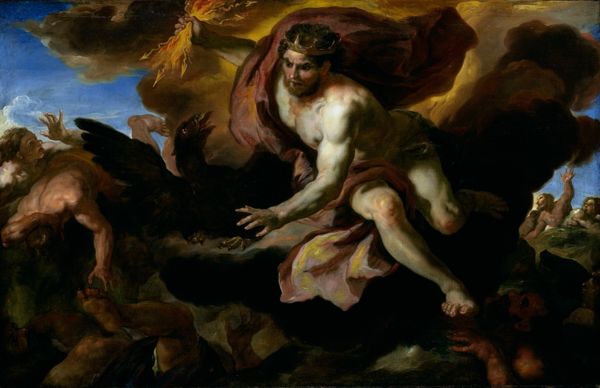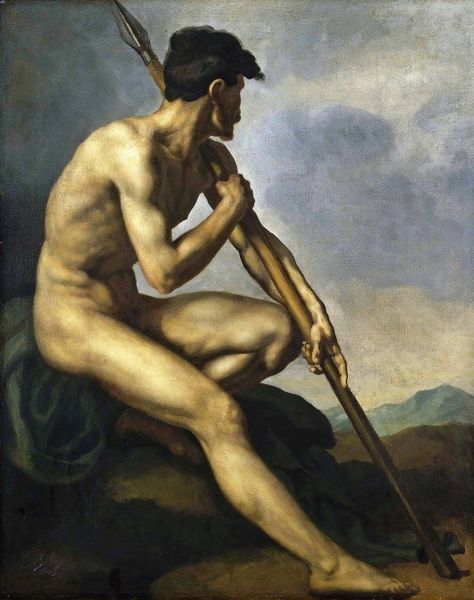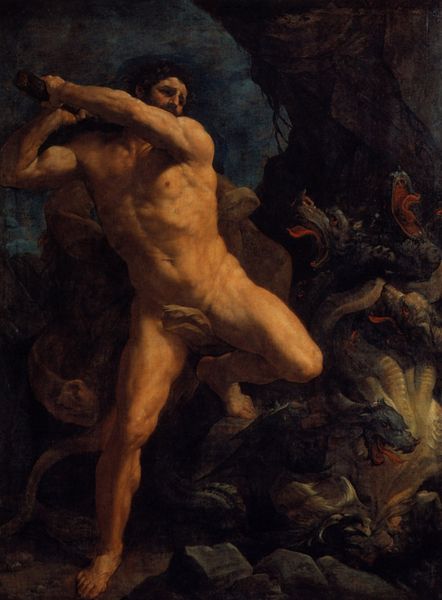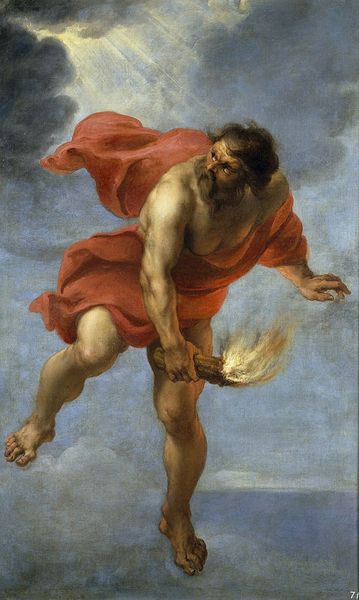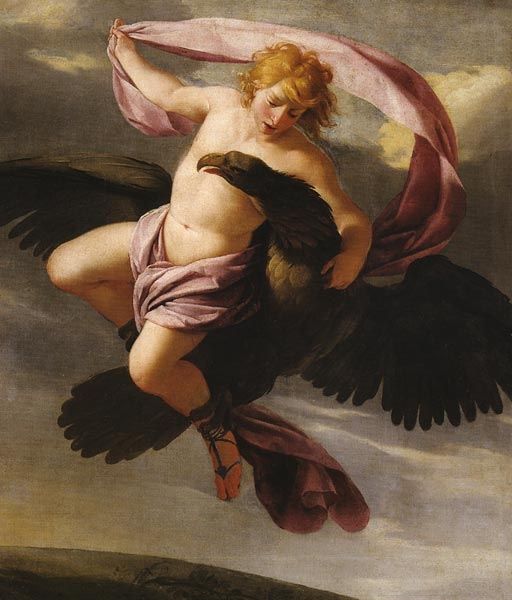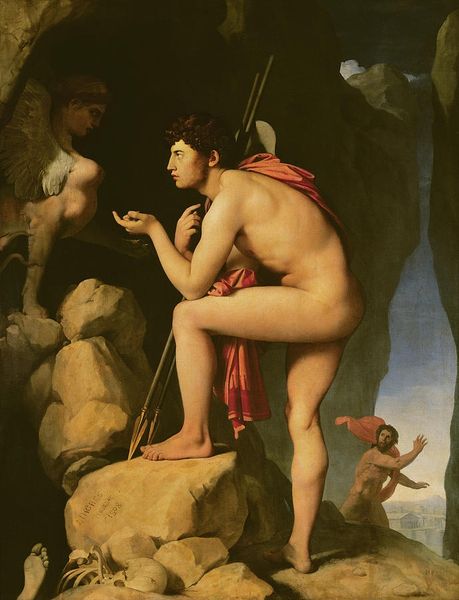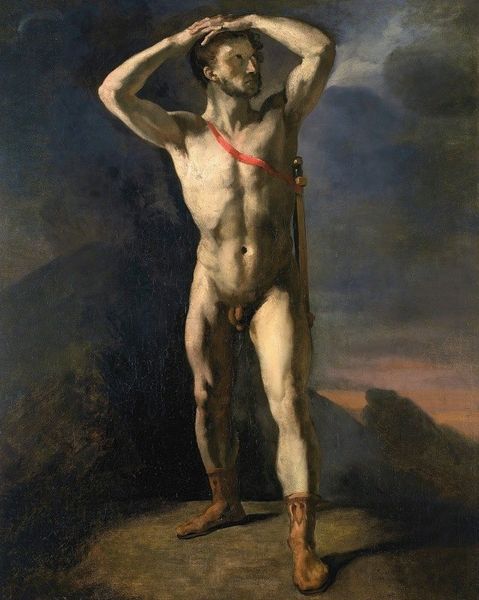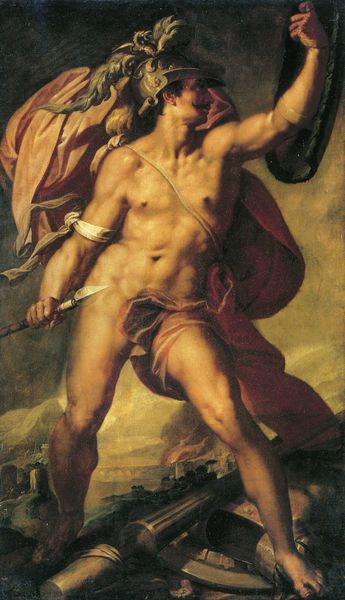
Saturnus ; Allegorische voorstelling van de verzorging van leprozen en onnozelen 1665 - 1685
0:00
0:00
oil-paint
#
baroque
#
oil-paint
#
figuration
#
oil painting
#
mythology
#
history-painting
Copyright: Public Domain: Artvee
Editor: So, here we have "Saturnus; Allegorische voorstelling van de verzorging van leprozen en onnozelen," an oil painting by Gerard de Lairesse, dating back to sometime between 1665 and 1685. There's a rather imposing winged figure with a scythe. I find the rendering of flesh tones and fabric rather striking, giving it an ethereal presence. What can you tell me about the social and historical context embedded in these choices of material, form and production, what’s your take on this? Curator: The materials, specifically oil paint, speak to the economic structures of the time. Access to such materials was dependent on wealth and patronage. Note how the smooth, almost idealized flesh tones contrast with the more roughly painted clouds. The labour involved in grinding pigments, preparing the canvas, and the time required to create such a large-scale work suggests the artist worked for a well-to-do patron. Editor: That's a great observation. What about the subject matter? The combination of Saturn and an allegorical depiction… leprosy and innocence. Is there something we can observe about the socio-political conditions of 17th century regarding disease or care? Curator: Absolutely. Depicting Saturn, traditionally associated with time and melancholy, within a context that mentions "verzorging van leprozen en onnozelen" prompts consideration on labour practices within care-giving institutions of the period. Where does the agency of the caretaker stand in this socio-economical scene? It raises important questions about how the suffering was perceived. How this was a profession by many but under appreciated at the time. Who was paying for their existence. How the institution were financed with different types of patronage in exchange of spiritual credits or family propaganda. How this all intersects with issues of power and the control. Editor: Fascinating. It seems to transcend simple aesthetics and reflects deep societal structures. I will see it differently now. Curator: Precisely. Examining art through this materialist lens helps unpack how seemingly simple elements reveal complex societal interactions of its time.
Comments
No comments
Be the first to comment and join the conversation on the ultimate creative platform.
